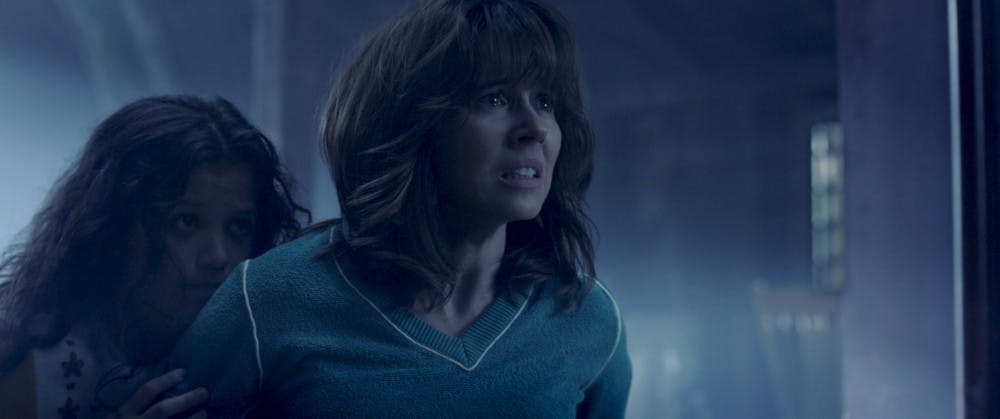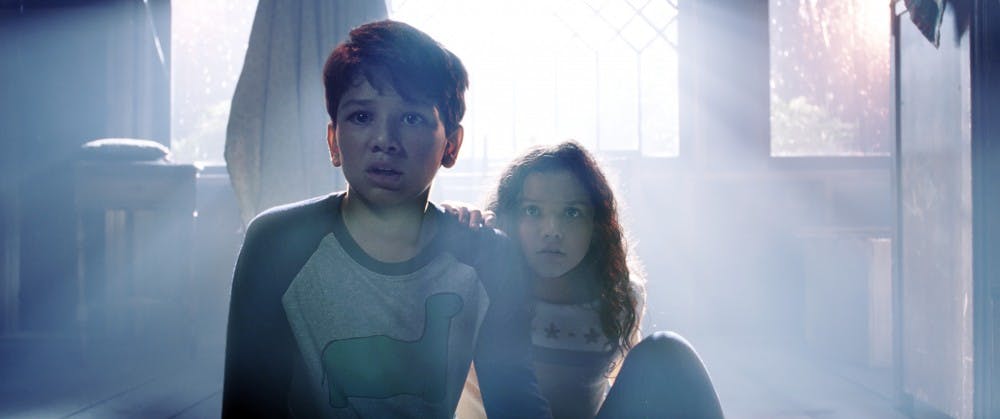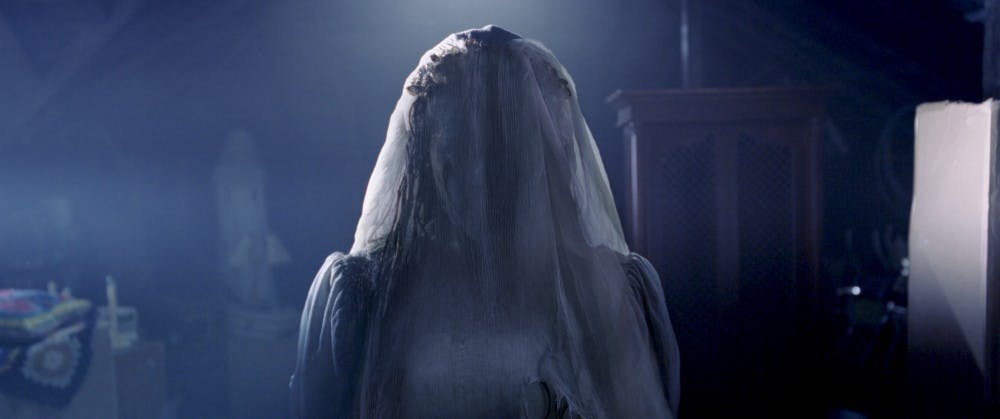Growing up, I wasn't plagued by the idea of strange boogeymen lurking in the dark. Instead I was haunted by story of the legendary La Llorona, or the Weeping Woman. Her story is ancient and dates back hundreds of years, so naturally, it varies. But I always knew it as follows: Before she was La Llorona, Maria was a young, beautiful and happy wife to a rich businessman. As their two sons grew older, Maria's husband began to travel more and grew disillusioned with her, as she was not as young and beautiful as she once was. Whenever her husband would visit, he would spend much of his time with his sons, and hardly paid any attention to Maria. Angry and confused, Maria blamed her children for her husband's actions and, in a fit of rage, drowned them in a nearby river. Immediately regretting her actions, Maria threw herself in the river, committing suicide. Her ghost, unable to cross over into the after life, now weeps constantly for her children and kidnaps and drowns any child she comes across, as she mistakes them for her own. The tale has been told to many, including myself, to keep children indoors, to keep safe from real dangers.
In short—this is a terrifying story. I'm an adult now, and I know that ghosts, like La Llorona, don't actually exist. But that didn't stop me from being petrified to watch this movie. As I sat to start the film, I couldn't help but feel like my six–year old self again—hearing about the Weeping Woman for the first time, and clinging to my mom. Unfortunately, The Curse of La Llorona hardly did anything to honor the Mexican legend. Instead, this film heavily relied on tacky jump–scares and a formulaic plot that failed to take advantage of the unique, thrilling, and tragic origin story of La Llorona.

The film begins in Mexico in 1673 with an image of two small boys playing in a field with their parents. In a flash, all of the family, except one son, remains. He wanders to a nearby river where he sees his mother drowning his brother. He attempts to flee, but fails, as his mother grabs his wrist and appears to drown him as well. This is the only reference to the origins of La Llorona, and it barely lasts a single minute in the entire film. This is my biggest problem with the movie—it missed so many opportunities to tap into La Llorona's potential as a chilling and twisted character. There is so much to be done with the idea of a mother who takes the lives of her own children because of their father's neglect. It's a story with layers and depth—which often makes for the most compelling villains. Then there's the added supernatural element, as the mother's ghost now preys on children in the real world, in a haze of confusion, regret, and sadness. It's scary, but it's also sad because she doesn't know what she's actually doing. La Llorona is a complicated, interesting, and bone–chilling character, and the filmmakers' decision to give her story a minute of screen time is possibly their biggest fault in this film.

The rest of the film is set in 1970s Los Angeles and follows social worker Anna Tate–Garcia (Linda Cardellini) and her two children, Chris and Sam. Anna ignores the warnings of Patricia Alvarez (Patricia Velasquez), whose two sons were drowned in a river by the ghost, La Llorona. Anna and her kids are then forced to accept the truth of La Llorona and thus enlist the help of a priest, Father Perez (Tony Amendola), to protect Chris and Sam and defeat the ghost.
Many viewers found issue in the Tate–Garcia family, as their only claim to any type of Latinidad is their last name, which is attributed to a deceased Latino father. While I initially found it to be problematic as well, I was willing to look past it. A Latinx family is likely to already know about the folktale, and people are naturally scared by the unknown—it makes sense that the family shouldn't know about La Llorona, as to increase the scare factor. But what is inexcusable is the formulaic feel of the film and its inability to scare even the most scare—able of audiences. This film is another installment in the popular Conjuring universe—and it definitely feels like it. Aside from the brief references to La Llorona, the rest of the film is practically identical to any other ghost story, in terms of plot. The same formula (family is warned of ghosts, family is in denial, family meets ghosts, and family defeats ghosts—the end) is deployed here, and it is as boring and repetitive as it sounds. In terms of scariness, La Llorona is actually quite creepy, clad in a long white dress and veil, with yellow eyes and tears of blood on her face. There are some scenes where she suddenly grabs Sam and Chris by the wrists (like she did her son, in the beginning), and leaves burn marks on them that'll make you jump a little. But that's the thing—this movie is all surprises and jump–scares.

Though terrified, I was initially very excited to watch this movie. It's not too often that I get to see something so relatable and close to home represented on the big screen as a big budget film. I was fully prepared to enjoy a movie that explored the vast world of Latinx folklore and superstition. But instead I got an underwhelming, recycled "horror" film that neglected La Llorona and treated her like a garden–variety ghost in a long white dress—as opposed to the complex, frightening, and deeply flawed mother that she is.

